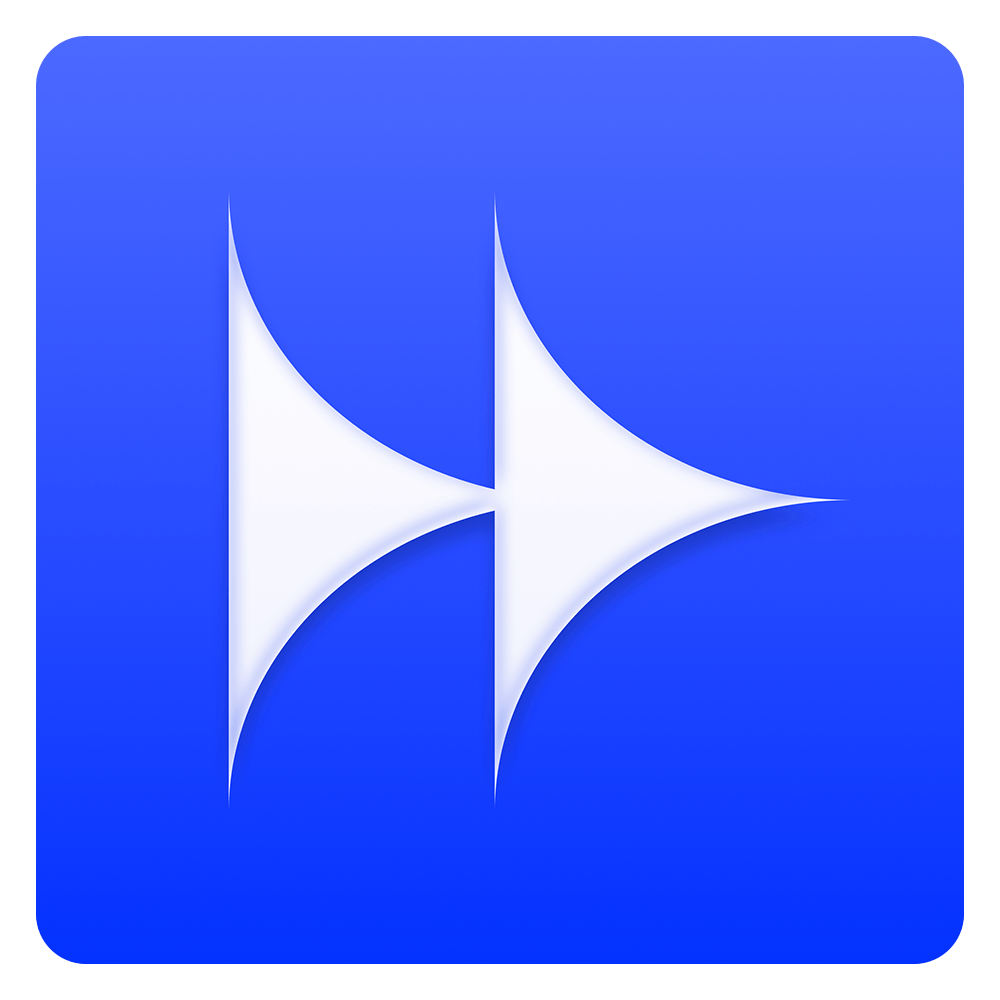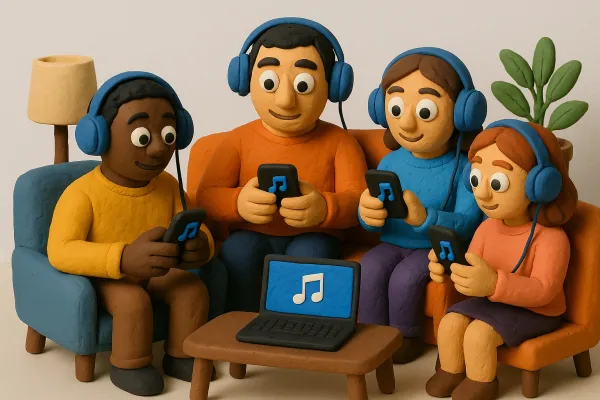How to Be an Independent Artist: A Comprehensive Guide to Success in the Creative Industry

Being an independent artist is no small feat. You're not just creating art; you're also your own manager, promoter, and brand strategist. But here's the good news—it's totally doable. With the right tools, mindset, and some real effort, you can carve out a space for yourself in the creative world. Whether you're a painter, musician, or filmmaker, this guide will walk you through practical steps to help you thrive while staying true to your craft.
Key Takeaways
- Define your artistic identity and stay consistent with your vision.
- Invest time in building a professional online presence, including a website and social media.
- Engage directly with your audience through meaningful interactions and events.
- Explore multiple ways to earn from your art, like merchandise, licensing, or streaming.
- Keep learning and adapting to stay relevant in an ever-changing industry.
Crafting Your Unique Artistic Identity
Discovering Your Creative Voice
We all start somewhere, right? But finding your creative voice is like tuning into the right radio frequency—it takes time and experimentation. Try different mediums, play with styles, and don’t be afraid to make mistakes. Your voice is what sets you apart in a crowded room of artists.
Here are some ways to start:
- Reflect on what inspires you. What stories do you want to tell?
- Experiment with different tools, techniques, or genres.
- Share your work with a trusted circle and get feedback.
Think of your creative voice as your fingerprint—completely unique to you. The more you embrace it, the more authentic your work will feel.
Defining Your Brand Aesthetic
Your brand aesthetic is like your personal signature—it’s how people recognize your work at a glance. This isn’t just about colors or fonts; it’s the overall vibe of your art. Are you minimalistic? Bold? Playful? Pin this down, and you’ll make it easier for people to connect with you.
Some things to consider:
- Pick a color palette that reflects your personality.
- Choose a consistent tone for your messaging (funny, serious, inspiring?).
- Keep your visuals cohesive across all platforms, from your website to your social media.
Staying True to Your Vision
Let’s be real—there’s always going to be pressure to follow trends or cater to what’s popular. But staying true to your vision is what keeps your art meaningful. Trends come and go, but authenticity lasts.
Here’s how to stay grounded:
- Regularly revisit your goals and ask, “Why did I start this in the first place?”
- Surround yourself with people who support your vision, not just your success.
- Don’t let every piece of feedback sway you. Take what helps and leave the rest.
Crafting a distinct artist identity isn’t just about standing out; it’s about connecting with your audience in a way that feels genuine. When you’re true to yourself, people notice—and they stick around.
Building a Strong Online Presence
Creating a Professional Website
Alright, let’s start with the basics: a website. Think of it like your online home. It’s where people go when they want to learn more about you and your work. A good website should be clean, easy to navigate, and packed with everything fans and potential collaborators might want to know. Include things like your bio, upcoming projects, a gallery or portfolio, and a contact form. This is your chance to make a killer first impression.
Pro-tip: Secure your domain name as soon as you can. If you’re an artist named Jane Doe, snag janedoe.com before someone else does. And don’t forget to keep it updated—there’s nothing worse than a site that looks like it’s been abandoned.
Mastering Social Media Engagement
Social media isn’t just for posting your lunch pics anymore—it’s a tool to connect with your fans and grow your audience. Platforms like Instagram, TikTok, and Twitter are goldmines for independent artists. But here’s the catch: consistency is key. Post regularly, engage with comments, and show your personality. People love getting a behind-the-scenes look at your creative process or even just your day-to-day life.
Here’s a quick checklist for social media:
- Post at least 3-4 times a week.
- Use hashtags strategically (but don’t overdo it).
- Respond to comments and DMs—fans love that personal touch.
- Mix it up: share your work, behind-the-scenes moments, and even some fun, unrelated content.
Leveraging Streaming Platforms
Streaming platforms like Spotify, Apple Music, and SoundCloud are your ticket to reaching a global audience. But uploading your music isn’t enough—you’ve got to optimize. Make sure your profiles have high-quality visuals and a compelling bio. Consistently release new material to keep your audience engaged. And don’t sleep on playlists; getting featured on one can do wonders for your visibility.
Here’s a simple table to compare popular streaming platforms:
| Platform | Best For | Key Feature |
|---|---|---|
| Spotify | Reaching global fans | Playlist placements |
| Apple Music | High-quality audio | Exclusive artist content |
| SoundCloud | Emerging artists | Direct fan interactions |
Building an online presence is about more than just being visible—it’s about being approachable and authentic. Fans want to feel like they know you, not just your work.
Connecting with Your Audience

Engaging Through Social Media
Social media isn’t just a megaphone—it’s a two-way street. We need to make it a habit to reply to comments, ask questions in posts, and even DM fans who’ve been extra supportive. This isn’t just about visibility; it’s about building real, lasting relationships. Think of it like hanging out with friends, not just promoting your work. Share behind-the-scenes snippets, funny mishaps, or even polls about what you should create next. The more personal and interactive we get, the more our audience feels like they’re part of the journey.
Hosting Live Events and Meetups
Nothing beats meeting people face-to-face. Whether it’s a full-blown concert or a casual meetup at a local café, live events let us connect on a deeper level. These moments make fans feel valued and give them memories tied to our work. Bonus tip? Sell some exclusive merch or offer a sneak peek of your next project during these events. And don’t forget to ask questions like, “Where’s everyone from?” or “What’s been your favorite moment so far?”—it’s a simple way to make the crowd feel seen. Utilize livestreams and exclusive private concerts too; they’re a fantastic way to include fans who can’t show up in person.
Involving Fans in Your Creative Process
People love feeling like they’re part of something bigger. Let’s invite our audience into our world by sharing drafts, sketches, or unfinished tracks and asking for feedback. Maybe run a contest where fans can vote on an album cover or suggest a theme for our next project. This isn’t just engagement; it’s collaboration. When fans see their input reflected in the final product, they’ll feel a stronger connection to it—and to us.
Monetizing Your Art Effectively
Exploring Diverse Income Streams
Alright, let’s be real—depending on just one way to make money as an artist? That’s a gamble. Instead, let’s talk about spreading it out. You can sell your original artwork, sure, but don’t stop there. Think about offering limited edition prints—people love owning something exclusive without breaking the bank. Teaching workshops or online classes is another great move; not only do you share your skills, but you also build a community around your art. And hey, licensing your work for commercial projects, like album covers or book illustrations, can bring in some solid cash too. The goal? Create multiple streams of income so you’re not stuck relying on just one thing.
Utilizing Licensing and Merchandising
Licensing is like putting your art to work for you. Companies pay to use your designs on their products, and you get a cut. It’s a win-win. Then there’s merchandise—think mugs, t-shirts, tote bags, or even puzzles featuring your art. Platforms like print-on-demand services make it super easy to get started without upfront costs. Just upload your designs and let them handle the rest. The best part? Every sale is like a little high-five for your creativity.
Maximizing Streaming Revenue
If your art is digital—like music, videos, or animations—streaming platforms are your playground. But don’t just upload and hope for the best. Engage with your audience, encourage them to share, and make sure your content is optimized for discovery. Streaming royalties might seem small at first, but over time, they can add up. Plus, platforms like Patreon or Bandcamp let your fans support you directly, creating a steady flow of income while keeping your art alive and thriving.
Monetizing your art isn’t just about making money; it’s about making your passion sustainable and giving it the room to grow.
Networking and Collaboration

Partnering with Fellow Artists
Working with other artists can be a game-changer for us. When we collaborate, we don’t just share skills—we also share audiences. Imagine teaming up with someone whose style complements yours. It’s like mixing two colors to create a shade no one’s seen before. Plus, it’s a chance to learn from each other. Collaboration isn’t just about the final product; it’s about the journey of creating something unique together.
Here’s how we can start:
- Reach out to artists we admire on social media.
- Attend local art shows or music gigs to meet people in person.
- Be open to experimenting with styles or mediums outside our comfort zone.
Attending Industry Events
Industry events are like treasure troves of connections. Whether it’s a music festival, an art fair, or a workshop, these places are packed with people who can help us grow. The trick is to show up, be approachable, and actually talk to people. Don’t just hand out business cards—make conversations that people will remember.
Quick tips for events:
- Have a short intro about who we are and what we do.
- Ask questions about the other person’s work—it’s a great icebreaker.
- Follow up afterward with a message or email to keep the connection alive.
Collaborating Across Mediums
Why limit ourselves to just one type of art? Collaborating across mediums can lead to some seriously cool projects. Maybe a painter partners with a musician to create an immersive experience, or a filmmaker works with a graphic designer for a unique visual style. The possibilities are endless, and the results can be groundbreaking.
Some ideas to try:
- Pairing live music with visual art projections.
- Writing a short story to accompany a photo series.
- Designing merch together with a fashion designer.
Building relationships in the creative world isn’t just about networking—it’s about finding people who inspire us and push us to do better. When we connect with others, we’re not just growing our careers; we’re growing as artists.
Staying Resilient in a Competitive Industry
Adapting to Industry Trends
The creative world moves fast. What’s popular today might feel outdated tomorrow. To keep up, we’ve got to stay curious and open to change. That means keeping an eye on what’s happening in the industry—new tools, fresh platforms, or even shifts in audience tastes. Maybe it’s learning a new software program or experimenting with a style you’ve never tried before. The key is to stay flexible without losing sight of who we are as artists.
Here’s how we can keep up:
- Follow industry news and blogs to stay in the loop.
- Attend workshops or webinars to sharpen our skills.
- Experiment with new mediums or techniques to stay fresh.
Overcoming Challenges and Setbacks
Let’s be real—setbacks are part of the journey. Maybe a project doesn’t land the way we hoped, or we face criticism that stings a little too much. It’s easy to feel discouraged, but these moments are where growth happens. Instead of seeing failure as the end, let’s treat it like a lesson. What can we learn? How can we bounce back stronger?
A few ways to handle tough times:
- Take a break to recharge and gain perspective.
- Talk it out with a trusted friend or mentor.
- Break big problems into smaller, manageable steps.
Sometimes, the hardest moments teach us the most about ourselves and our craft. It’s not about avoiding failure—it’s about learning how to rise after it.
Continuously Improving Your Craft
We can’t get complacent. The best way to stand out in a crowded space is to keep leveling up. Whether it’s taking a class, collaborating with someone new, or just dedicating extra time to practice, there’s always room to grow. Improvement isn’t about perfection; it’s about progress.
Ideas for ongoing growth:
- Dedicate time each week to learning something new.
- Seek feedback from peers and actually use it.
- Set small, achievable goals to keep moving forward.
Staying resilient isn’t just about toughing it out—it’s about evolving, learning, and staying true to what drives us. Let’s keep pushing forward, even when the road gets bumpy. Independent musicians must cultivate resilience to keep thriving in this ever-changing industry.
Promoting Your Work Strategically
Developing a Marketing Plan
Alright, let’s talk strategy. A solid marketing plan is like a map—it keeps you on track and prevents you from wandering aimlessly. Start by figuring out your goals. Are you trying to grow your fanbase? Sell more merch? Get playlisted? Once you know what you’re aiming for, break it into smaller, actionable steps.
Here’s a quick checklist to get you started:
- Set specific, measurable goals (e.g., gain 500 new followers in 3 months).
- Identify your target audience—who are they, and where do they hang out online?
- Plan your content calendar. Mix it up with posts about new releases, behind-the-scenes moments, and fan shoutouts.
A pro tip? Consistency beats perfection every time. Showing up regularly, even with simple updates, builds trust and keeps you on your audience’s radar.
Pitching to Media and Playlists
Getting your work in front of new eyes and ears is all about the pitch. Whether you’re reaching out to blogs, magazines, or playlist curators, keep it professional but personal. Nobody likes a cookie-cutter email.
Here’s how to craft a killer pitch:
- Start with a short, engaging intro about who you are.
- Highlight what makes your work unique or newsworthy.
- Include links to your best tracks, portfolio, or press kit.
And don’t forget to follow up! Polite persistence often pays off. Oh, and if you’re pitching to playlists, remember that playlisting isn’t a magic wand—it’s a tool to complement your other efforts, not a standalone solution.
Using Paid and Organic Advertising
Advertising doesn’t have to break the bank. A mix of organic content and targeted ads can work wonders. Organic posts (like sharing your creative process or responding to fan comments) build trust and authenticity. Paid ads, on the other hand, help you reach new audiences fast.
Here’s a simple table to compare both:
| Approach | Cost | Reach |
|---|---|---|
| Organic Content | Free (just your time) | Limited to your followers |
| Paid Ads | Budget-friendly options start at $5 | Broader, targeted audience |
Experiment with platforms like Instagram, TikTok, or YouTube to see where you get the best results. And always track your ad performance—no point in throwing money at something that isn’t working.
“Promoting your work isn’t about shouting the loudest; it’s about connecting with the right people in the right way.”
To get your work noticed, think about how you share it. Use social media, join groups, and connect with others who might be interested. Don't forget to check out my website for more tips and ideas on promoting your work!
Conclusion
So, there you have it. Being an independent artist isn’t easy, but it’s definitely worth it if you’re passionate about your craft. It’s a mix of creativity, hustle, and a whole lot of learning as you go. You’ll wear a million hats—creator, marketer, accountant, and more—but every step you take is a step toward building something that’s truly yours. Keep experimenting, stay connected with your audience, and don’t be afraid to mess up. Mistakes are just part of the process. At the end of the day, it’s all about staying true to your art and enjoying the ride. You’ve got this!
Frequently Asked Questions
How can I discover my unique artistic style?
Start by experimenting with different mediums and techniques. Reflect on what inspires you and what message you want to convey. Over time, your preferences will shape your unique style.
What are the best ways to build an online presence as an artist?
Create a professional website, stay active on social media, and share engaging content like behind-the-scenes glimpses of your work. Consistency is key to connecting with your audience.
How can I make money as an independent artist?
Explore various income streams such as selling your art, offering workshops, creating merchandise, licensing your work, and using crowdfunding platforms like Patreon.
Why is networking important for independent artists?
Networking helps you connect with other artists and industry professionals, opening doors to collaborations, gigs, and promotional opportunities that can grow your career.
What should I do when facing setbacks in my artistic career?
Stay resilient by learning from challenges. Keep improving your skills, adapt to changes, and focus on your long-term goals. Setbacks are part of the journey to success.
How can I effectively promote my work?
Develop a marketing plan that includes social media, email newsletters, and collaborations with influencers. Use both paid and organic advertising to reach a broader audience.





